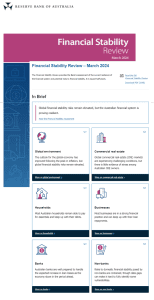The Tales of Dodd-Frank: Too Divided to Rule?
Two recent developments in the financial world highlight the divergence between legislators and regulators when it comes to implementing Dodd-Frank and dealing with the too-big-to-fail institutions. On one hand, Congress is considering new legislation that could lead to passage of the Financial Institutions Bankruptcy Act of 2016, which would help justify the continued existence of large financial institutions. On the other hand, the Federal Reserve has removed GE Capital from its list of Systemically Important Financial Institutions (SIFI) as the firm significantly downsized in the face of what it perceived as a prohibitive cost structure.
Let us provide a quick refresher on the too-big-to-fail concept. With the financial crisis came the realization that some institutions have become so big that allowing them to fail would have a domino effect for the system. During the crisis, the government had to intervene using taxpayers’ money to backstop the market. One direct outcome was the formation of a universal movement, championed by the Dodd-Frank Act, to tackle the so-called too-big-to-fail problem.
Eight years later, with many of the bill’s original supporters in Congress no longer in office, and the urgency of the crisis fading from the public memory, regulators and legislators stance tend to diverge. Two strategies dominate the discussion. Capitol Hill wants to solve the issue by making SIFIs’ orderly resolution feasible, which requires reworking the bankruptcy code to better handle large financial firms. The preference, here, is to maintain the current size and activities of large institutions. By contrast, the Fed plans on tightening its yearly stress test for the biggest and most complex banks openly expresses their ambition to make the cost of being large significantly challenging. In their eyes, GE capital is a success story.
Interestingly, both parties seem agree with our assessment of Dodd-Frank, recently released as an MI Viewpoints white paper. The SIFI framework can only work if the three required steps (identification, prudential enhancement, and resolution plans) are successfully implemented. By significantly increasing the cost of compliance, the Fed’s ultimate ambition may be to break SIFIs into smaller entities. This would make step 3, the “living will” — a resolution plan designed to allow a bank to go through bankruptcy without disrupting the financial system — obsolete. This is a good thing since only one of the eight living wills submitted by the U.S. banks was deemed credible by both the Federal Reserve and Federal Deposit Insurance Corp. under the current bankruptcy code. As an alternative, Congress intends to facilitate SIFIs’ ability to fulfill the three criteria by adapting the current law to include a Financial Institutions Bankruptcy Act, which also would enable SIFIs to demonstrate a clear path to an orderly failure under bankruptcy at no cost to taxpayers. Of course, the two strategies would have different impacts on the real economy. The GE Capital case illustrates what it took to lose the too-big-to-fail tag: patience, 3 years and a significant reduction of lending and leasing activities.
Finally, if the Financial Institutions Bankruptcy Act passes, could it be a way for SIFIs to circumvent criticisms that they remain too-big-to-fail without a taxpayer bailout, or will it be a useless tool as it will be too costly for big banks to pass the Fed stress test? Then, of course, there is the fundamental question when it comes to the bankruptcy for SIFIs: Ultimately, will it remains a domestic exercise or will it be a multinational procedure? Osborne’s intervention in the US-HSBC money laundering case is a telling example.

